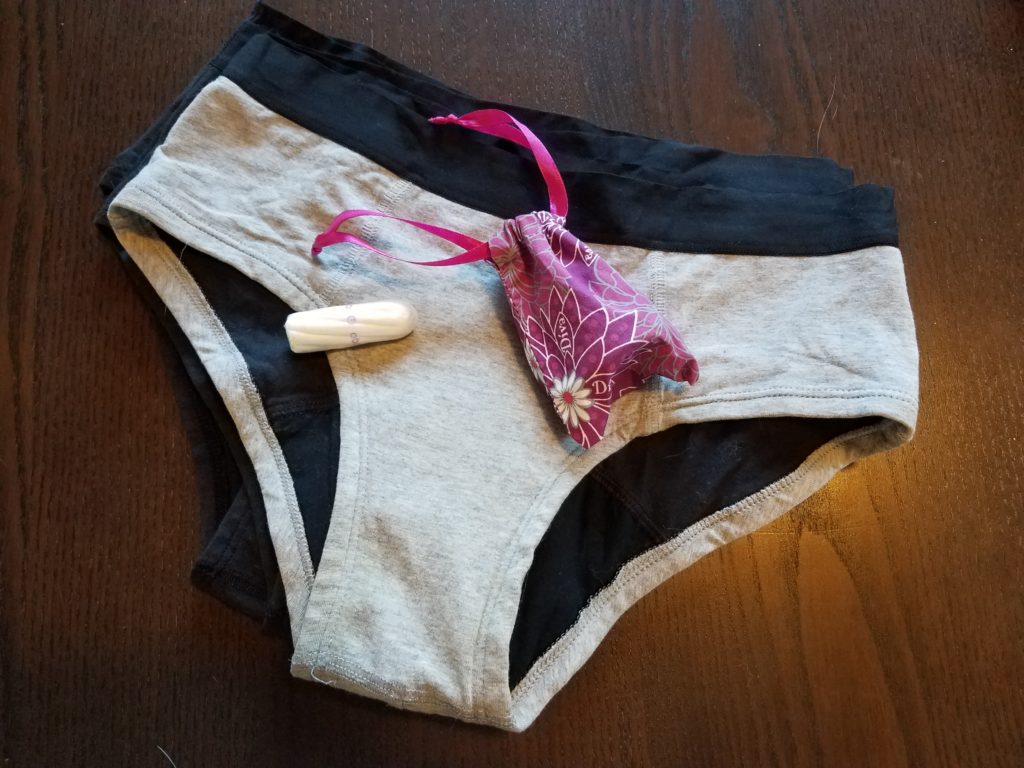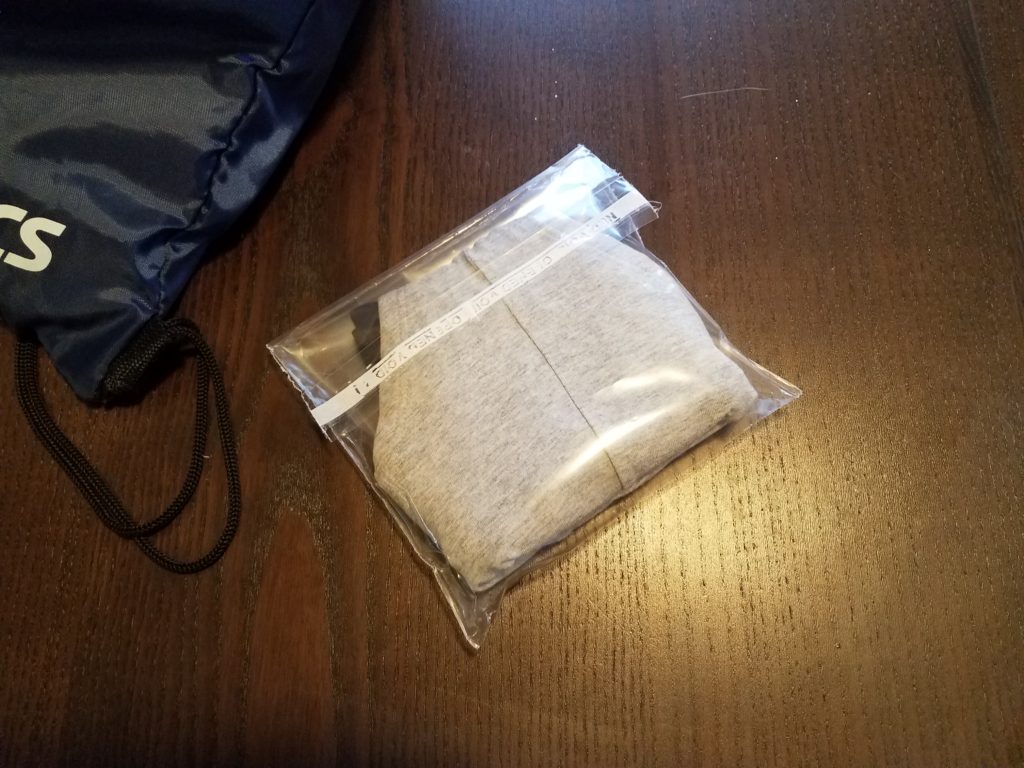Abandon all squeamishness, ye who enter here.
Part of me almost hates to start this week’s update with a content warning because I will be talking about a natural process that half of the world’s population experiences (and that the other half of the world’s population really should understand anyway). I try to stay as objective as possible on these blog posts, but I do not think it is a matter of opinion to say that the topics of menstruation and reproductive health are stigmatized in our society to the detriment (and sometimes the danger) of anyone with a uterus. This post is going to contain frank information about bodily functions and will serve as a safe space for any questions/comments that you the readers have (the whole site is, but here especially).
If you have no interest or desire to read this post, I hope you’ll be back next week… but I would encourage you to take a little time to stretch your comfort zone on this topic in a way that works for you, if only to understand some of the stresses, concerns, and decisions that come with having a uterus.
My Background
I have been a devotee of the menstrual cup for a good five years now, but it took a short adjustment period before I learned to love it. Researching and writing this post was a good reminder to me that I was once someone grossed out by applicator-free tampons, and that there are still plenty of people who are reluctant to branch out to different products. Of course I understand that some people may not be able to afford the upfront cost of reusables or may have medical reasons why they can’t use certain products, but the low adoption rate of reusable menstrual products in the US is in no small part due to the stigma that I mentioned above: we as a society are hesitant to discuss our periods, touch blood, and touch ourselves. Once I began using my cup, I began to see my period as a natural part of being a healthy adult, and my reluctance to use it (and talk about it) went away.

Very unfortunately I am not currently able to use my cup. I am enrolled in a clinical study of an experimental IUD, and it is “strongly recommended” that I don’t use a menstrual cup. While there is no formal prohibition in the medical community against using a cup and an IUD simultaneously, there is anecdotal evidence that you can accidentally pull out an IUD with a cup, either from the suction or by physically pulling on the strings during cup removal… which is incidentally how I lost my first IUD, so I am being extra cautious for the duration of this study (33 months to go…).
As I’m climbing off my soapbox, let me just say that I cannot recommend the cup highly enough. My biggest problem with it was that it was so comfortable, I would forget I had it in. You’re supposed to clean it out every 6 hours, and that didn’t always happen because I wouldn’t feel it and wouldn’t think about it until it was full. Comfortable, hygienic, sustainable, and easy to use after you get the hang of it. …and honestly, I got over the “ick factor” of cleaning it after the first time. It can be a little difficult to manage in a public restroom, but I’ve emptied it in a port-a-potty during a marathon and lived to tell the tale.
However, as that is not an option for me at the moment, I wanted to see if zero waste could be done without a cup. Of course it can be done: my grandmother and generations before hers used rags to soak up menstrual blood, and those rags had no odor-blocking, moisture-wicking technology like today’s period panties. In short, we already know it is possible, but the question I wanted to answer was whether or not it is as convenient as what we’re used to. Spoiler alert: while I do not wish to concern or discourage anyone from the zero-waste methods I’m detailing here, I can honestly say that I just had the most frustrating, anxiety-inducing, work-intensive period of my life.
My Lenten Experience
I actually managed to get through my period this week using no tampons at all, only period panties (and yes, I’ll brand-drop – I gradually accumulated four pairs of Thinx after being told I shouldn’t use my cup for 3 years). This brand (and probably others as well) tells you to back up your protection with a cup or tampon on heavy flow days, which I would do if I could use a cup (which I won’t during this study) or a tampon (which I won’t during Lent).
Consequently, I spent a good three days this week rotating through all four pairs every day: wearing, washing in the sink, line-drying or drying on the lightest heat setting if I needed them sooner (not great for them, by the way). I got very tired of rinsing out blood and hand-washing underwear every six hours. I also absolutely hated the feeling of sitting in my own blood – something I’m not used to as a cup/tampon user. Granted, the period panties are not nearly as bad as using a pad (from what I remember – it has been since middle school), but I can’t think of the last time I was this miserable during a period.

Interestingly enough, I found out this week at a regular checkup that I am one of the only participants in my IUD study who uses period panties. I found this out because the woman who enters the study data specifically sought me out while I was in the office to ask me what I thought of them. I was fair and honest: when you use them as instructed, they are comfortable and work well.
Of course, that’s not what I’m doing right now. They do require a backup on heavy flow days (as the instructions say.) Zero-waste without a cup is incredibly work-intensive and requires constant vigilance. Those of you doing the math will also correctly infer that I was washing out panties in the bathroom at work – not something everyone can or wants to do. My reason for trying this experiment was to see if it could be done: it can. Can I understand why people don’t do it? Hell yes.
Will I back up with tampons on the heaviest days of my period moving forward? Probably. Will I still use reusable cotton panty liners and period panties as my primary product (until I can use my cup again)? Absolutely.
Finally, I want to let you know that in doing research for this week’s post, I came across enough statistics, questions, conflicting information, and interesting tangents to fill a research paper. I could not begin to touch on it all in a single blog post, so I will be writing a series of articles at some point in the future, fully comparing the impacts of major one-time-use products and their reusable equivalents. I actually had a lot of fun doing the research and calculations for each of the options, and I’m looking forward to sharing all of that information. I hope you join me for that as well.
Weekly Recap:

- Waste Total – more apple and banana stickers, 2 pieces of dental floss, “member” ribbon from conference nametag, empty toothpaste tube, #4 plastic ring from glass milk bottle
- Personal Victories – making it through my entire period without using one single-use product.
- Missed Opportunities – used a public bathroom and threw away the paper towel, ordered nachos at a brewery and forgot to grab the waxed paper liner from the tray.
- Husband Hardships – “Nothing qualifies as a hardship.”
Are there specific menstrual products you’ve tried or are curious about? Products that work well or not so well? Please feel free to share your experiences below.
Thanks for reading!
0 Comments